I was so stoked when I finally finished sanding and staining my new medium brown hardwood floors – they really pulled the whole living room together, ya know?
But then I was like, ah man what color am I gonna paint these walls now?
I tried a few swatches that just didn’t hype the floors up enough.
So I hit the internet to do some research on what shades tend to jive best.
What I found is that light neutrals, pale pastels, and mellow earth tones are boss combinations with brown flooring.
I also learned something dope – certain greens can work surprisingly well depending on the wood’s undertones.
Who knew?
Here is my list of matching colors:
✨Click to Get My 101 FREE Designer Room Ideas
Cloud White

Cloud White is the homie color to pair with medium brown floors.
Its lightness really lets the fly floors shine without competing for attention in the room.
We’re talking super light grayish off-white, almost like a brightened up dull shadow.
The cool thing about Cloud White is it keeps the vibe really neutral and zen.
It ain’t in yo face with any crazy brightness that could overwhelm.
The floors stay lit and look way richer next to such a pale backdrop.
Plus the white bounces light around to make the whole space feel wider, brighter, and cleaner.
Some key things that make Cloud White a certified banger with brown wood:
- Lifts the floors without yelling too loud
- Brings a super chill, bright neutral vibe
- Makes other colors and textures pop harder
- Won’t ever go outta style, a true OG classic
If you want the focus on them dope floors without distraction, then this is the ace pairing for sure.
The floors get all the freshness and shine they deserve next to such light walls.
Next level vibes guaranteed, my guy.
Sea Salt
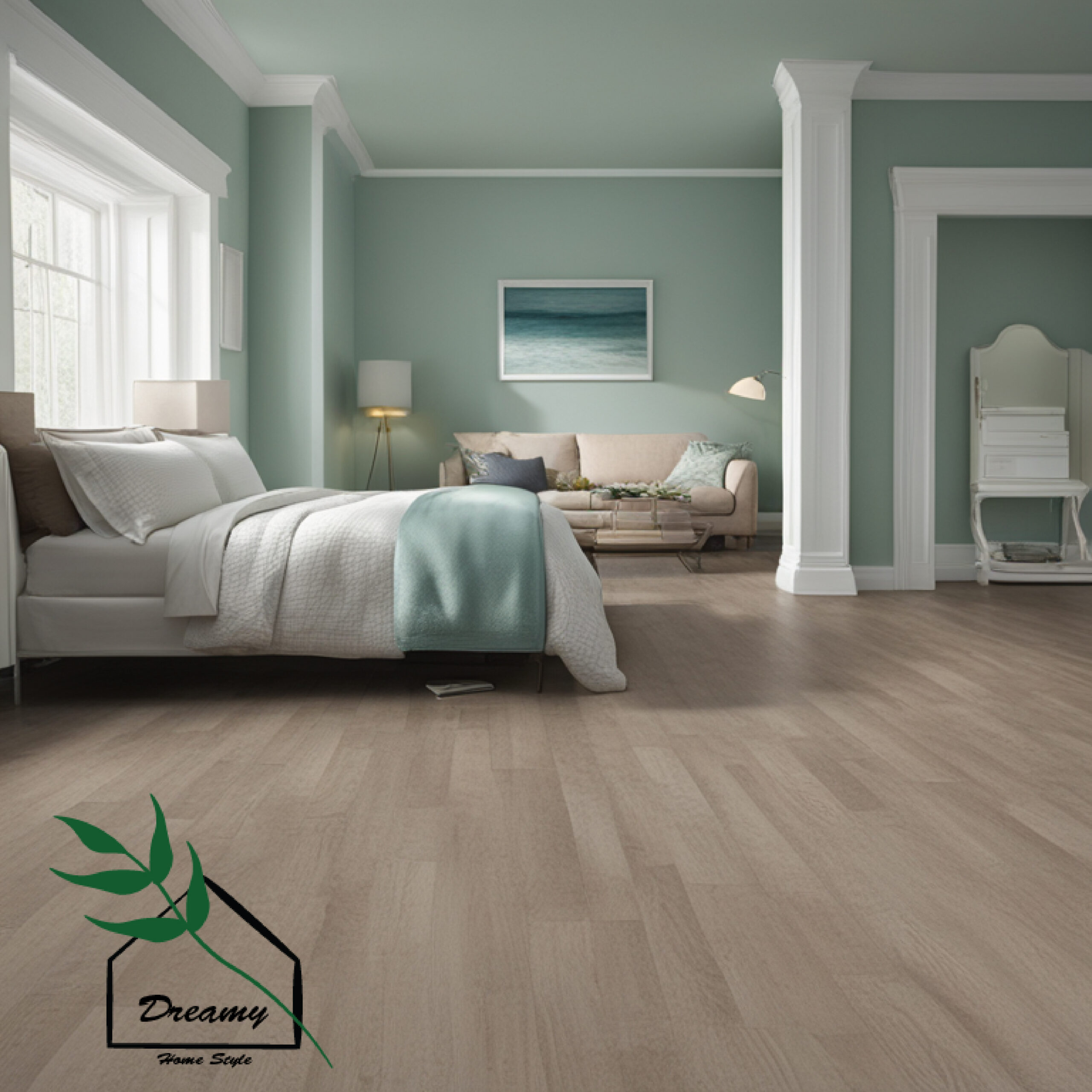
Sea Salt is another gangster colorway that looks so cash money with medium brown flooring.
It’s a shade lighter than Cloud White with a touch more color to it – think soft light gray with a hint of beige.
Kinda like the pale foam of an ocean wave, feel me?
Where Cloud White is straight neutral, Sea Salt has just enough warmth to make things cozy without distracting from the wood.
The floors pop against it without stomping all over the vibe.
It creates a clean backdrop to let the rich tones shine.
I love that Sea Salt is nearly as light as white but seems moister somehow.
Makes the space feel bright and airy without going full snow blind.
Some key wins it has over straight white:
- Adds a hint of weight the floors need
- Brings a coastal, beachy vibe
- Warmth without going taupe or beige
- Makes hardwood feel more lived in
Whether you rep a surf town or not, Sea Salt taps into those laidback summer vibes.
It’s a super lit color to chillax against while still letting the wood floors stunt, fool.
Ballet Slipper
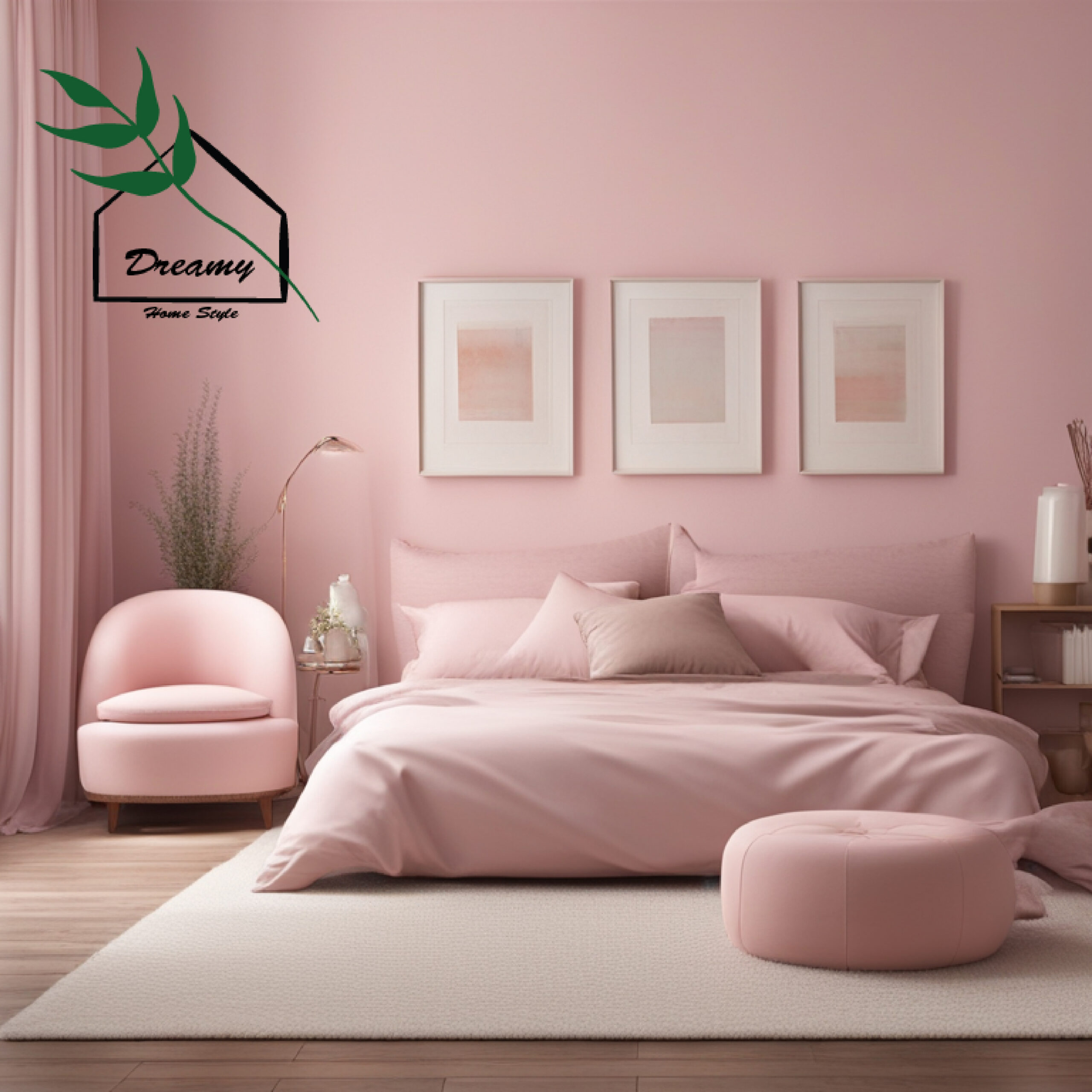
Now Ballet Slipper is a pastel pink dream over medium brown floors, no cap.
It’s like the lightest whisper of blush – more like a faded ballerina hue than a shouty neon pink.
Think pinkish grey or the inside of a ballet shoe, get it?
At first glance you might think pink and brown is wack, but I’m telling you – this color combo is fly as hell.
The pink is so pale it reads almost white, but adds just enough softness to the room.
Some things I notice when I use Ballet Slipper:
- Makes the space feel girly and romantic
- Brightens things up way better than straight white
- Keeps the floors grounded while lightening the mood
- Pink is low-key a neutral these days too fool!
Don’t knock it till you try it – this pastel is a sleeper hit that goes way harder with brown than you’d think.
The floors look rich and manly while the pink brings a relaxed, dreamy feel.
Not basic at all, on the real!
Pool Blue
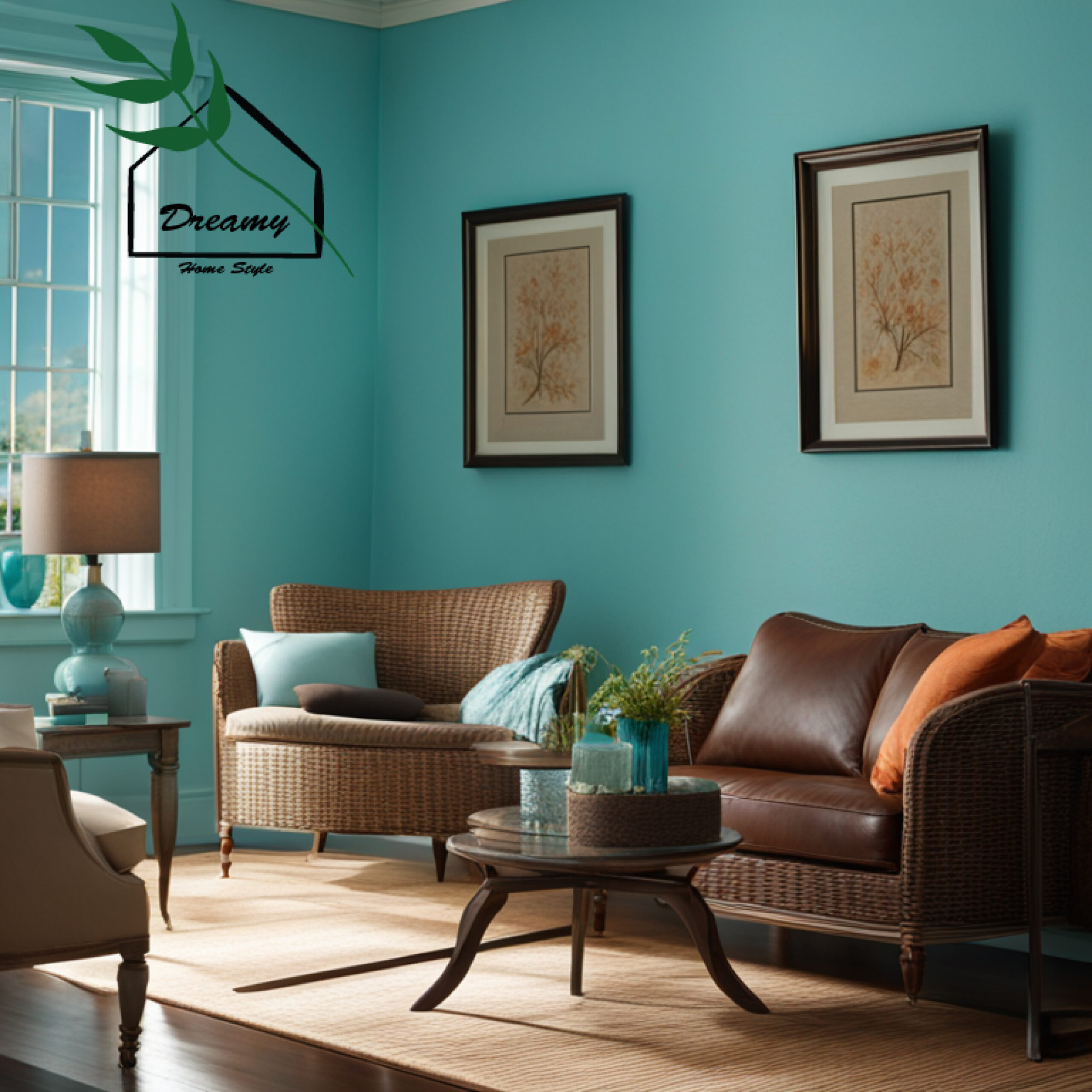
Now hear me out – Pool Blue might seem like a weird one but it really makes the brown floors sing, I sware on everything.
We ain’t talking bright Miami blue either, more like the pale robin’s egg shade of an above-ground pool.
Real light and faded, with a tint of gray.
The dope thing about Pool Blue is how well it pops against brown without crushing the vibe.
The wood takes on this rich chocolatey element next to the paleness.
The blue is super grounded too – not in your face at all.
Some things I dig about Pool Blue:
- Brightens up the space way better than a putty hue
- Keeps the floors feeling warm and cozy
- Vocab is reminiscent of a backyard hangout
- More unique than white without distracting from the brown
It might seem cray at first but trust – this blue is low-key fire against a medium toned wood.
The floors come through real clean and clear with the blue as a fresh backdrop.
A goated color combo if you ask me!
✨Click to Get My 101 FREE Designer Room Ideas
Putty
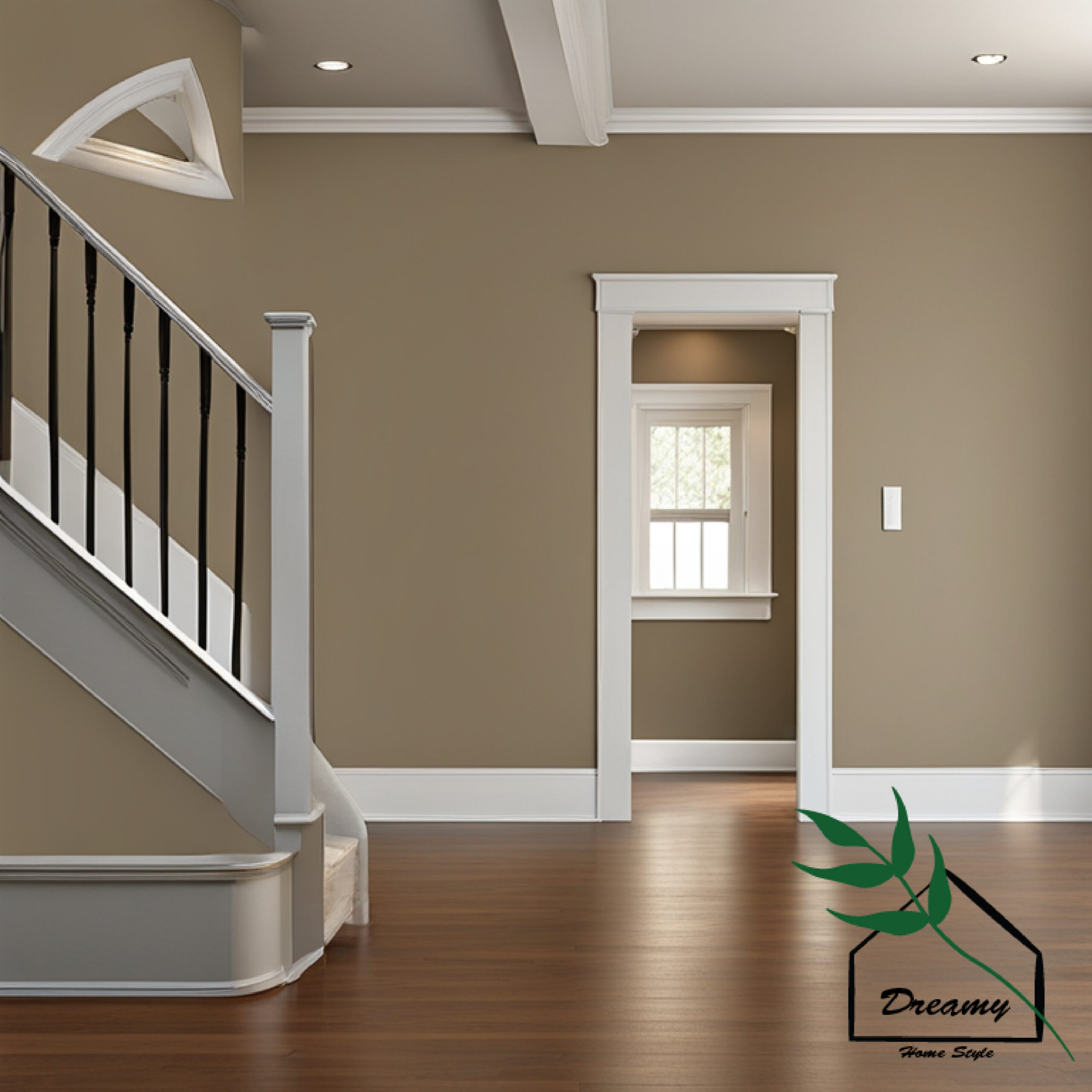
Now Putty is a classic earth tone that vibes heavy with brown floors, no doubt.
It’s like a mellow greyish tan – subtle reminiscent of dried clay or mud.
Real thumpy and natural looking, feel me?
What’s dope about Putty is how well it blends into the background while letting the brown shine.
The floors pop without stealing focus, and the whole space gets a cozy lived-in vibe.
It’s kind of like wearing sweats – comfortable chill.
Some attributes that make Putty such a sick pairing:
- Mellow, unobtrusive shade holds its own
- Brings the floors to the forefront nicely
- Sets a relaxed, homey ambiance
- Grounding without being overly beige or taupe
It ain’t the most exciting pick maybe, but Putty is guaranteed to make your brown floors come through on top without distraction.
A true OG color for a reason – can’t fail with the classic thump vibes.
Taupe
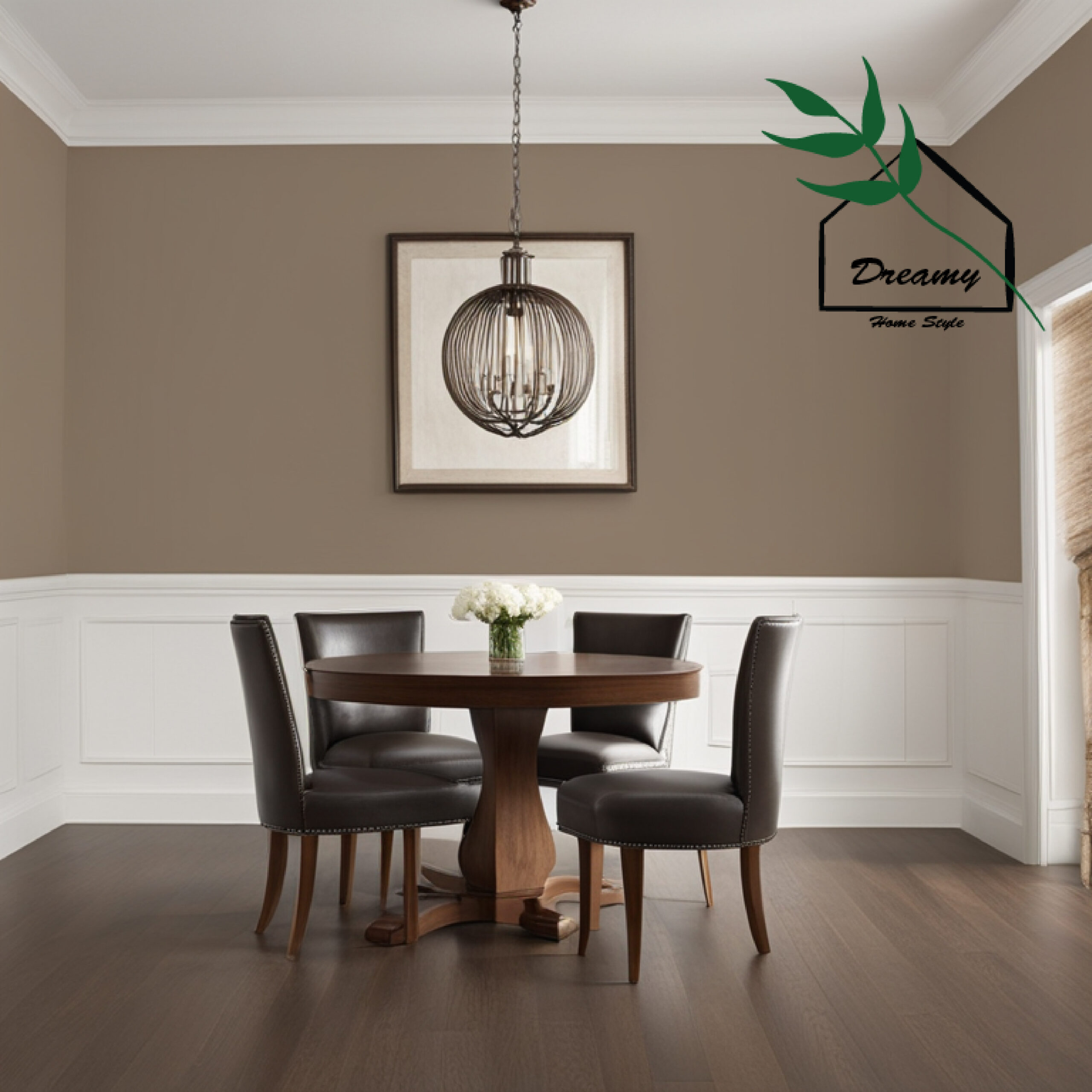
Now Taupe is kinda like Putty’s older, richer brother – also a Gangsta earth tone to rap with brown floors.
We talking muted greyish-beige, almost like dirty ash.
Super smooth and luxurious looking for real.
What makes Taupe an ace is how it amplifies the floors’ natural warm tones without challenging them as the star of the show.
Those brown woods really pop with depth and dimension against the subtlety of Taupe walls.
Some key ways Taupe holds it fly with wood:
- Makes the brown warm undertones sing
- Adds richness while keeping the vibe subdued
- Pairs mature sophistication with clean comfort
- Can work for any style from rustic to modern
Taupe is an OG in the game – timeless, versatile and never gonna look wack.
Your floors will feel pimped with the upgrade it brings.
Not too loud, not too trash – the refined neutral your space needs no cap.
Award-worthy combo right here, trust – elevate your floors status with some proper Taupe on the walls!
Oatmeal
As a home designer, I’m a big fan of using Oatmeal as a wall color with medium brown floors.
Oatmeal has that classic soft neutral appeal that works in almost any design style.
Oatmeal has a muted warm tone that enhances the brown floor without distracting from it.
The undertones bring out the floors’ natural richness.
From a design perspective, this subtle complementing of tones creates a cohesive color scheme.
It also has just enough color variation to feel lively without overwhelming the space.
Many clients want a warm, inviting feel in common areas like living rooms.
Oatmeal hits that notes perfectly – it’s arguably the prettiest of the pale neutrals.
The texture it adds is also key.
Much like genuine oatmeal, the paint color has a mellow tone-on-tone appearance that reads smooth and soothing to the eye.
It makes the room feel calmly put-together.
Plus, oatmeal is highly durable.
Over time as walls naturally fade slightly, the color will soften in a flattering way rather than looking brassy or tired.
Low maintenance is always a selling point for homeowners.
In the end, oatmeal is a very livable neutral that enhances and brightens the look of brown flooring without competing for attention.
It allows the materials to shine through while tying the design together – that’s what I’d recommend as a designer.
Steel Gray
Steel Gray has a modern, sleek look but still feels neutral and tranquil.
It won’t overpower the warm wood tones.
The subtle cool undertones will make the grain and knots in the brown floorboards really pop without competing for attention.
Steel Gray is ideal for clean-lined, minimalist interiors with mixed metals, glass, stone, or wood accents.
It complements those materials.
Unlike stark white, this gray won’t show dirt or scuffs as much over time.
The color will soften beautifully with age rather than look dingy.
Lighter gray walls create the perception of more light and airiness compared to beiges or taupes.
It feels bright and vast.
Those rich brown planks will look polished and luxurious against this sophisticated backdrop rather than swallowed up.
Steel Gray is versatile – it pairs neatly with both warm-toned furnishings and cool accents like blues, greys, blush.
This color pairing is a great modern choice that flatters the brown floors while feeling fresh and easy to live with day to day.
The floors truly become the design hero of the space.
✨Click to Get My 101 FREE Designer Room Ideas
Fern Green
At first glance green and brown may seem odd, but the deep nature vibes are actually quite harmonious.
Fern Green has an organic, earthy feel that evokes lush foliage.
It gives the space a peaceful, greenhouse-like ambience.
The contrasting cooler hue sets off the warmth of the floors beautifully without overwhelming them.
Dark green is psychologically soothing.
It feels tranquil and helps energize better than light neutrals alone.
If going for a cabin or jungle theme, this color combo really sings through with cohesiveness.
A fern wall behind a sofa draws the eye as a natural focal point, letting the hardwood shine elsewhere.
Unlike lighter colors, it hides mild scuffs and marks well over time for an lived-in look.
So in summary, while uncommon, Fern Green makes a beautifully dramatic accent with brown floors that is graphic and grounding at once.
An adventurous yet organic choice.
Foggy Green
Foggy Green has a gentle, misty tonality that feels calm and soothing.
It’s a relaxed take on green without being too dark or bold.
The pale, muted hue casts a serene spell.
It’s perfect for spa-like bathrooms or meditation areas where clients want a sense of peace.
Like Fern Green but less dramatic, Foggy Green still carries the grounding qualities of greens in nature.
It’s great for those wanting a hint of the outdoors.
The very subtle contrast makes the brown really shine in texture and warmth where it may get lost against white.
Unlike bright hues, Foggy Green wears well over time as some brightness fades.
It’ll never look shabby or dull out.
From modern farmhouse to Scandinavian, it fits many aesthetics without dominating.
Can also work well mixed with woodland colors.
Overall, as a designer, I find Foggy Green a calming and uplifting choice for brown floors that feels fresh yet will endure beautifully for years to come.
A lovely accent worth suggesting.
Olive
Olive taps into nature with an organic, grounded tone that feels natural alongside wood.
It’s a sophisticated nature-inspired hue.
The medium green undertones enhance and bring out the floors’ warm sun kissed brown appearance.
They play off each other nicely.
Olive reads as modern and crisp compared to more traditional greens.
It works well in sleek, minimalist settings alongside metals, stone, etc.
Like other greenery-inspired hues, olive has a soothing quality that can aid focus and relaxation.
A calming choice.
From rustic to retro to modern farmhouse, olive blends effortlessly into a variety of aesthetics when paired with natural materials.
Unlike many neutrals, olive maintains a lively presence without fading into the background over time.
Always fresh-looking.
Its medium depth hides marks and scuffs well without requiring frequent touch ups.
A durable choice.
So, olive makes a lovely pop of nature against brown floors through its rich, grounded tones.
Both vintage and contemporary, it’s a versatile and visually engaging accent wall hue.
Dove Gray
Dove Gray has an understated elegance – it’s a lighter, quieter variation of the gray family.
The cool undertones let the brown flooring’s natural richness resonate without competing for attention.
Lighter grays create a sense of spaciousness.
It’s a great choice for making smaller areas feel more open.
From classic to modern farmhouse to industrial, Dove Gray mixes well due to its chameleon-like tones.
Unlike stark white, it wears well over time, fading attractively rather than looking dingy.
High durability.
Gray colors are known to reduce stress and anxiety.
A serene choice.
It blends with a range of decor styles from layered wool fabrics to sleek metals and marble.
As both a sophisticated neutral and feeling brighter than medium grays, Dove Gray beautifully complements brown wood floors while designing serene, light-filled interiors.
A top choice.
✨Click to Get My 101 FREE Designer Room Ideas
Magnolia
Magnolia has gentle peach undertones that give it a cozy, soothing quality without being overly feminine.
The subtle peach bump brings out the golden flecks and gives the floors a romantic, honey-tinged glow.
It flatters the wood.
Despite being light, Magnolia isn’t stark.
It widens and lifts a room in a way crisp white can’t always do.
Works for everything from rustic cabins to breezy beach cottages to soft modern farmhouses.
Suitable for many styles.
Its muted tone hides minor scuffs and marks well over multiple years.
Stays fresh.
The pale blush makes any home feel wrapped in a warm, romantic hug.
Boosts mood and comfort.
Reminiscent of magnolia blooms, it feels organic next to wood.
An elegant spin on nature’s partnership.
Magnolia has all the virtues of soft neutrals but with an extra grace note that beautifully flatters brown flooring.
A lovely choice.
Sand Dollar
The subtle tan/beige tone has a sun kissed quality that transports one to coastal locales.
Perfect for nautical or seaside styles.
It’s a toasted, more golden take on an off-white – elegant like cashmere but even cozier and comforting.
The tan perfectly picks up any hints of honey or amber in the wood grain, making it really sing while retaining naturalness.
Goes with everything from wicker and bleached wood to throw pillows and rattan.
Widely compatible with mixed decor.
Rather than being stark, it radiates a soft golden light that feels soothing and uplifting throughout the day.
Wears beautifully like true sand over time rather than quickly appearing dated.
Durable enough for high-traffic areas.
An easy and affordable way to brighten up dark rooms or give an old space new life without a full renovation.
In short, Sand Dollar ties together the beachy ambiance and warmth of a beach vacation home seamlessly with brown flooring for a cheery, inclusive vibe.
Gray Complex
I am talking about wonderfully complex gray with subtle undertones of blue, green and brown.
It’s neutral without feeling dull.
The brown-gray hue really enhances the depth and richness of wood tones.
The floors will pop beautifully.
Despite being pale, it won’t make a space feel small or empty.
The tone is light but soothing.
Reminiscent of old mill or factory windows, it adds historical character wherever used.
Great for period pieces.
Unlike stark whites, it gently fades attractively instead of showing marks.
Maintains a fresh yet cozy feel.
It works in everything from industrial lofts to farmhouse kitchens to modern colonials.
It provides impact without radical change, allowing lighter remodels over heavy construction costs.
Celery
Celery is a very light, pale green that emanates serenity.
It promotes calm and clarity.
Its gentle hue evokes being outdoors in nature without being too bold.
It’s like a breath of fresh air.
The subtle contrast makes the warmth in the flooring shine through while complementing it softly.
It goes with both traditional and contemporary styles seamlessly when mixed with woods and fabrics.
Despite being light, it makes a visual statement without dominating.
The green sings against brown.
Thanks to its tender tone, it shows little wear over time and won’t date as quickly as hot colors.
Like other pale greens, it has therapeutic attributes and fosters productivity and relaxation.
So, Celery offers a fresh, soothing take on green that uplifts brown floors with an energizing yet restful vibe.
A tranquil choice.
✨Click to Get My 101 FREE Designer Room Ideas
Dusty Blue
I find Dusty Blue to be an intriguing accent wall color choice to pair with medium brown floors.
Dusty blue has a soft, pale depth that adds calm without feeling dull.
It promotes relaxation and creativity.
The hue evokes cloudy skies and coastal scenes.
It transports the client and connects the home to the natural world.
Against the brown floors, dusty blue has a gentle settling presence.
It doesn’t make the space feel clinical like cooler whites can.
From farmhouses to lofts, it mixes easily into various aesthetics when combined with timber, wool, and stone textures.
Unlike brighter hues, it wears attractively over the years, retaining a peaceful atmosphere as the tone softly changes.
Though pale, dusty blue creates the perception of spaciousness.
It draws the eye upwards and prevents closure.
The subtle contrast allows the wood grain’s warm uniqueness to shine clearly in features while retaining harmony.
Overall, I find Dusty Blue an excellent choice to stimulate calm and openness when juxtaposed with brown flooring’s foundation.
A versatile and enduring backdrop.
Pecan
Pecan is a rich, golden brown tone that enhances the wood hue without competing.
Elegant complement.
The subtle contrast helps the floors’ natural variation of light and dark really sing.
Grain and knots pop beautifully.
The warm gold radiates comfort and visual interest.
It feels embracing without being heavy or dated.
Unlike trendy colors, pecan endures for decades.
The color softens attractively rather than looking worn out.
Works with everything from rustic mountain cabins to classic colonials to modern farmhouse style.
Provides an affordable way to refresh decor without a renovation.
Works with existing furnishings easily.
Has richness without ostentation.
The floors appear polished in a very polished, pulled-together home.
So pecan makes an excellent sophisticated choice that flatters brown flooring through creating an inviting, cohesive space with layers of warm depth and luxury.
Sandstone
Sandstone is a versatile accent wall color I often pair with medium brown hardwood floors.
Sandstone’s soft taupe tone adds visual interest without overwhelming the wood.
Its neutrality allows other design elements to shine.
The color mimics the look of textured stone, enhancing the natural variations within the grain.
Together they create dimension.
The hue feels polished yet inviting, lending an air of expensive taste effortlessly to rustic or modern spaces alike.
Its beige-gray accents bring out golden warmth in the wood without contrasting too starkly.
A harmonious match.
Unlike white, it maintains a fresh instead of dirty look over time.
Small marks blend into the subtle tone.
Light taupe balances stimulation and relaxation, so clients feel both at peace and inspired in their home.
From lodge to farmhouse, it partners the floors through eras and aesthetics seamlessly.
Sandstone offers designers a go-to choice for pairing visual interest, longevity and polish when designing with brown wood grain.
A true chameleon.
Moss
Moss is a quiet, earthy green that feels grounded and serene.
It evokes the outdoors.
The subtle color contrast makes the wood’s varying tones and textures really stand out.
As a pale green, moss has therapeutic qualities that reduce stress and clear the mind.
From mountain cabins to lofts, it’s a versatile neutral that mixes with wood, stone, fabrics easily.
The pale green is subtle yet gives a breath of freshness, as if embracing nature indoors.
Over time it weathers attractively rather than looking dingy.
Adds character as it softly evolves.
Doesn’t require replacing as trends change, saving renovation dollars long-term.
As a designer I find Moss a lovely balance of natural vibrancy, calm and visual complexity when accenting brown hardwood floors.
It feels fresh years later.
To conclude, when choosing an accent wall color to pair with medium brown hardwood floors, it’s best to select a hue that will enhance the wood’s natural beauty without overwhelming it.
The color samples discussed here – Olive, Dusty Blue, Magnolia, Sand Dollar, Window Pane, Celery, Pecan, Sandstone and Moss – do just that through their balancing neutrality and subtle depth.
Whether you are drawn to earth tones, pale hues or something in between, these colors act as sophisticated backdrop styles that heighten the warmth, texture and tones within the flooring.
They create an layered, polished space where the eye can focus on attractive detail rather than jarring contrast.
Most importantly, these neutral selections lend themselves to both contemporary and traditional design preferences through their versatile chameleon nature.
They ensure the flooring – a substantial investment – remains the focal point for years to come as the chosen accent color softens with grace over time.
Whether you work with a designer or curate your home yourself, finding the right complementary partner will allow your hardwood’s natural splendor to shine through for decades.

